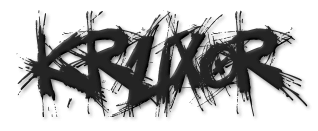mask-border-source
Quick Summary for mask-border-source
Code Usage for mask-border-source
/* Keyword value */ mask-border-source: none; /* <image> values */ mask-border-source: url(image.jpg); mask-border-source: linear-gradient(to top, red, yellow); /* Global values */ mask-border-source: inherit; mask-border-source: initial; mask-border-source: revert; mask-border-source: unset; More Details for mask-border-source
mask-border-source
The mask-border-source CSS property sets the source image used to create an element's mask border.
The mask-border-slice property is used to divide the source image into regions, which are then dynamically applied to the final mask border.
Syntax
/* Keyword value */ mask-border-source: none; /* <image> values */ mask-border-source: url(image.jpg); mask-border-source: linear-gradient(to top, red, yellow); /* Global values */ mask-border-source: inherit; mask-border-source: initial; mask-border-source: revert; mask-border-source: unset; Values
none No mask border is used.
<image> Image reference to use for the mask border.
Formal definition
| Initial value | none |
|---|---|
| Applies to | all elements; In SVG, it applies to container elements excluding the defs element and all graphics elements |
| Inherited | no |
| Computed value | as specified, but with url() values made absolute |
| Animation type | discrete |
Formal syntax
none | <image>where
<image> = <url> | <image()> | <image-set()> | <element()> | <paint()> | <cross-fade()> | <gradient>where
<image()> = image( <image-tags>? [ <image-src>? , <color>? ]! )<image-set()> = image-set( <image-set-option># )<element()> = element( <id-selector> )<paint()> = paint( <ident>, <declaration-value>? )<cross-fade()> = cross-fade( <cf-mixing-image> , <cf-final-image>? )<gradient> = <linear-gradient()> | <repeating-linear-gradient()> | <radial-gradient()> | <repeating-radial-gradient()> | <conic-gradient()>where
<image-tags> = ltr | rtl<image-src> = <url> | <string><color> = <rgb()> | <rgba()> | <hsl()> | <hsla()> | <hwb()> | <hex-color> | <named-color> | currentcolor | <deprecated-system-color><image-set-option> = [ <image> | <string> ] [ <resolution> || type(<string>) ]<id-selector> = <hash-token><cf-mixing-image> = <percentage>? && <image><cf-final-image> = <image> | <color><linear-gradient()> = linear-gradient( [ <angle> | to <side-or-corner> ]? , <color-stop-list> )<repeating-linear-gradient()> = repeating-linear-gradient( [ <angle> | to <side-or-corner> ]? , <color-stop-list> )<radial-gradient()> = radial-gradient( [ <ending-shape> || <size> ]? [ at <position> ]? , <color-stop-list> )<repeating-radial-gradient()> = repeating-radial-gradient( [ <ending-shape> || <size> ]? [ at <position> ]? , <color-stop-list> )<conic-gradient()> = conic-gradient( [ from <angle> ]? [ at <position> ]?, <angular-color-stop-list> )where
<rgb()> = rgb( <percentage>{3} [ / <alpha-value> ]? ) | rgb( <number>{3} [ / <alpha-value> ]? ) | rgb( <percentage>#{3} , <alpha-value>? ) | rgb( <number>#{3} , <alpha-value>? )<rgba()> = rgba( <percentage>{3} [ / <alpha-value> ]? ) | rgba( <number>{3} [ / <alpha-value> ]? ) | rgba( <percentage>#{3} , <alpha-value>? ) | rgba( <number>#{3} , <alpha-value>? )<hsl()> = hsl( <hue> <percentage> <percentage> [ / <alpha-value> ]? ) | hsl( <hue>, <percentage>, <percentage>, <alpha-value>? )<hsla()> = hsla( <hue> <percentage> <percentage> [ / <alpha-value> ]? ) | hsla( <hue>, <percentage>, <percentage>, <alpha-value>? )<hwb()> = hwb( [<hue> | none] [<percentage> | none] [<percentage> | none] [ / [<alpha-value> | none] ]? )<side-or-corner> = [ left | right ] || [ top | bottom ]<color-stop-list> = [ <linear-color-stop> [, <linear-color-hint>]? ]# , <linear-color-stop><ending-shape> = circle | ellipse<size> = closest-side | farthest-side | closest-corner | farthest-corner | <length> | <length-percentage>{2}<position> = [ [ left | center | right ] || [ top | center | bottom ] | [ left | center | right | <length-percentage> ] [ top | center | bottom | <length-percentage> ]? | [ [ left | right ] <length-percentage> ] && [ [ top | bottom ] <length-percentage> ] ]<angular-color-stop-list> = [ <angular-color-stop> [, <angular-color-hint>]? ]# , <angular-color-stop>where
<alpha-value> = <number> | <percentage><hue> = <number> | <angle><linear-color-stop> = <color> <color-stop-length>?<linear-color-hint> = <length-percentage><length-percentage> = <length> | <percentage><angular-color-stop> = <color> && <color-stop-angle>?<angular-color-hint> = <angle-percentage>where
<color-stop-length> = <length-percentage>{1,2}<color-stop-angle> = <angle-percentage>{1,2}<angle-percentage> = <angle> | <percentage>
Examples
Basic usage
This property doesn't appear to be supported anywhere yet. When it eventually starts to be supported, it will serve to define the source of the border mask.
mask-border-source: url(image.jpg); Chromium-based browsers support an outdated version of this property — mask-box-image-source — with a prefix:
-webkit-mask-box-image-source: url(image.jpg); Note: The mask-border page features a working example (using the out-of-date prefixed border mask properties supported in Chromium), so you can get an idea of the effect.
Specifications
| Specification |
|---|
| CSS Masking Module Level 1 # the-mask-border-source |
See also
mask-border mask-border-mode mask-border-outset mask-border-repeat mask-border-width Last modified: Aug 12, 2021, by MDN contributors

